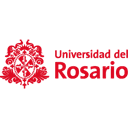This course is part of Arte, arquitectura y diseño creativo del sur global..
This course offers an expanded view of fashion in Latin America through specific garments that connect students with their own cultural identity. It sparks curiosity about the regional sartorial world by questioning the history and function of representative textile elements. The program takes a journey through Colombia and Latin America, highlighting the historical and contemporary influence of traditional clothing.
Instructors:
Spanish
Español
What you'll learn
Understand the breadth of clothing history and its reflection in daily life, draw identity parallels through the topics covered, identify the trajectory and history of garments and their influence on political, gender, and historical issues, engage with more everyday fashion, recognize the scope of native fashion and the influences it has had to this day.
Skills you'll gain
This course includes:
24 Hours PreRecorded video
Graded assignments, exams
Access on Mobile, Tablet, Desktop
Limited Access access
Shareable certificate
Closed caption
Get a Completion Certificate
Share your certificate with prospective employers and your professional network on LinkedIn.
Created by
Provided by

Top companies offer this course to their employees
Top companies provide this course to enhance their employees' skills, ensuring they excel in handling complex projects and drive organizational success.





There are 4 modules in this course
This course explores the rich Latin American textile tradition and its fundamental role in shaping cultural identities. Students analyze traditional accessories such as hats, headdresses, and bags, examining their Indigenous and African origins and how these elements act as extensions of local worldviews and thought. The course delves into the study of the ruana, an emblematic garment of rural and Indigenous communities, tracing its geographic journey through Colombia and the Latin American Andes, along with its symbolic and functional meanings. The program also addresses the history of the skirt from native and contemporary perspectives, analyzing its transformations and significance within current feminist contexts. Finally, alpargatas are studied as elements reflecting population displacement and political expression, exploring the relationship between sociopolitical circumstances and the evolution of regional fashion. Through these specific garments, the course provides a comprehensive understanding of Latin American fashion as a complex cultural phenomenon that reflects diverse histories, forms of resistance, and identities.
Accessories as Extensions of Thought
Module 1
The ruana and its geographical journeys
Module 2
The skirt beyond the form
Module 3
Espadrilles: displacement and political fashion
Module 4
Fee Structure
Individual course purchase is not available - to enroll in this course with a certificate, you need to purchase the complete Professional Certificate Course. For enrollment and detailed fee structure, visit the following: Arte, arquitectura y diseño creativo del sur global.
Payment options
Financial Aid
Instructor

1 Course
Textile Artist Bridging Fashion, Art, and Identity
Vanessa Rueda Moya is a Colombian visual artist and educator specializing in textile art and fashion. With a Master’s degree from NABA in Milan, she explores hybrid languages by intervening in garments, photographs, illustrations, and accessories. Her creative journey spans Bogotá, Milan, and New York, where she ran her own brand for over five years. Vanessa has collaborated with Doneger, TheWild Magazine, Versace, David Byrne, and Salon du Chocolat. Her works have been showcased in Tokyo, London, Milan, Bogotá, and New York. Currently based in Bogotá, she continues to research, create, and consult, focusing on Latin American identity through fashion.
Testimonials
Testimonials and success stories are a testament to the quality of this program and its impact on your career and learning journey. Be the first to help others make an informed decision by sharing your review of the course.
Frequently asked questions
Below are some of the most commonly asked questions about this course. We aim to provide clear and concise answers to help you better understand the course content, structure, and any other relevant information. If you have any additional questions or if your question is not listed here, please don't hesitate to reach out to our support team for further assistance.


